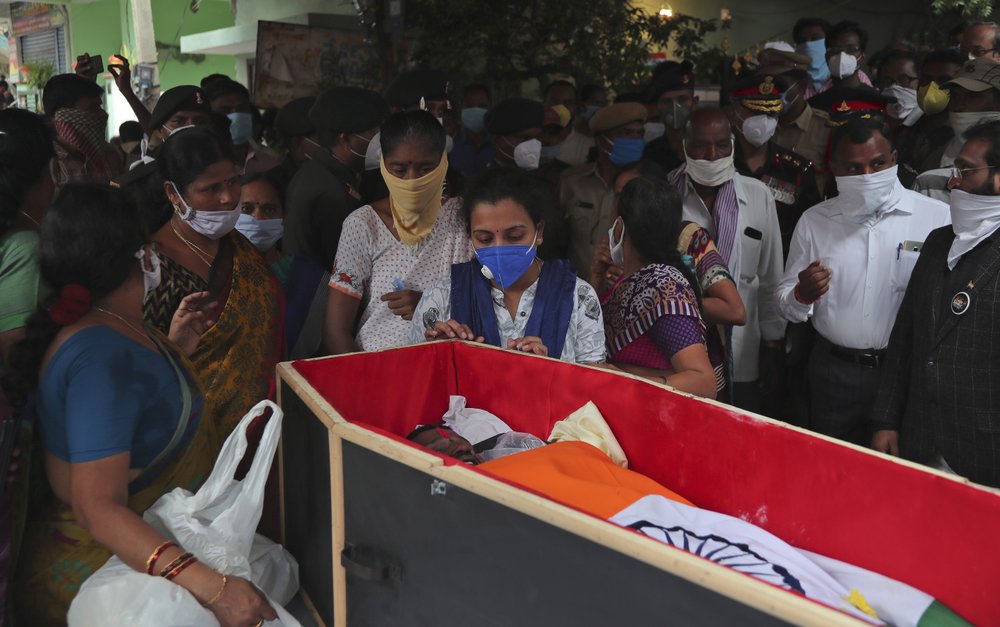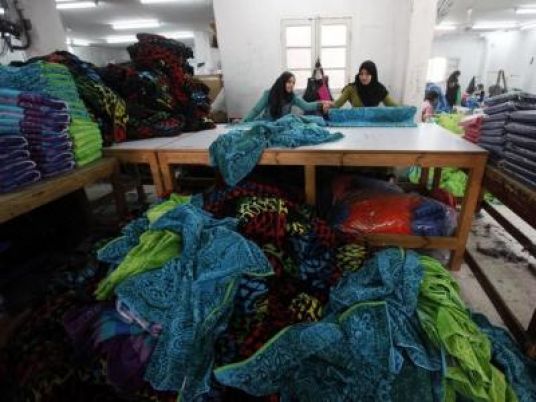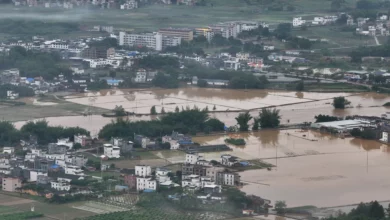
NEW DELHI (AP) — India on Thursday cautioned China against making “exaggerated and untenable claims” to the Galwan Valley area even as both nations tried to end a standoff in the Himalayan region where their armies engaged in a deadly clash.
Twenty Indian troops were killed in Monday’s clash, which was the deadliest conflict between the sides in 45 years. China has not disclosed whether its forces suffered any casualties.
Responding to China’s claim to the valley, India’s External Affairs Ministry spokesman Anurag Srivastava said both sides agreed to handle the situation responsibly. “Making exaggerated and untenable claims is contrary to this understanding,” he said in a statement.
Both sides accused each other of instigating the clash between their forces in the valley, part of the disputed Ladakh region along the Himalayan frontier.
China stuck to its position that it was Indian troops who had deliberately provoked and attacked its officers, though it also signaled it wanted talks, noting the importance of the broader bilateral relationship.
Foreign Ministry spokesperson Zhao Lijian, citing Chinese Foreign Minister Wang Yi in a call with his Indian counterpart, said that “mutual respect and support serves our long-term interests” as two emerging nations trying to realize their full development.
“After the incident, China and India communicated and coordinated through military and diplomatic channels,” he said at a daily briefing. “The two sides agreed to deal fairly with the serious events caused by the conflict in the Galwan Valley, and […] cool down the situation as soon as possible.”
Meanwhile on Thursday, an Indian confederation of small and midsize companies called for a boycott of 500 Chinese goods, including toys and textiles, to express “strong criticism” of China’s alleged aggression in Ladakh.
The call for a boycott followed protests Wednesday in New Delhi where demonstrators destroyed items they said were made in China while chanting “China get out.”
The Himalayan clash has fanned anti-Chinese sentiments already running high due to the coronavirus. India counts more than 366,000 virus cases and 12,200 deaths.
But a broader boycott could backfire for India if China chose to retaliate by banning exports to India of the raw ingredients used by India’s pharmaceutical industry.
Media reports said senior army officers of the two sides met Wednesday to defuse the situation, but there was no confirmation from either side.
Indian security forces said neither side fired any shots, instead throwing rocks and trading blows. The Indian soldiers, including a colonel, died of severe injuries and exposure in the area’s sub-zero temperatures, the officials said.
India’s External Affairs Minister Subrahmanyam Jaishankar said Thursday that all Indian troops at Galwan were carrying arms on Monday. But as per 1996 and 2005 agreements between the two countries, they were not expected to use firearms during faceoffs, he said on Twitter.
He was apparently responding to criticism by opposition Congress party leader Rahul Gandhi who wanted to know “why were our soldiers sent unarmed to martyrdom?”
The clash escalated a standoff in the disputed region that began in early May, when Indian officials said Chinese soldiers crossed the boundary at three different points, erecting tents and guard posts and ignoring warnings to leave. That triggered shouting matches, stone-throwing and fistfights, much of it replayed on television news channels and social media.
China’s foreign minister warned New Delhi not to underestimate Beijing’s determination to safeguard what it considers its sovereign territory. His comments came in a phone call Wednesday with his Indian counterpart, Subrahmanyam Jaishankar.
Wang said China demanded that India conduct a thorough investigation and “harshly punish” those responsible.
Jaishankar, in turn, accused China of erecting a structure in the Galwan Valley, which he called a “premeditated and planned action that was directly responsible for the resulting violence and casualties,” according to a statement.
He added that the incident would have “serious repercussions” on India’s relationship with China, but that both sides were committed to further disengaging on the remote plateau of the Himalayan terrain.
While experts said the two nations were unlikely to head to war, they also believe easing tensions quickly will be difficult.
China claims about 90,000 square kilometers (35,000 square miles) of territory in India’s northeast, while India says China occupies 38,000 square kilometers (15,000 square miles) of its territory in the Aksai Chin Plateau in the Himalayas, a contiguous part of the Ladakh region.
India unilaterally declared Ladakh a federal territory while separating it from disputed Kashmir in August 2019. China was among the handful of countries to strongly condemn the move, raising it at international forums including the UN Security Council.
Thousands of soldiers on both sides have faced off over a month along a remote stretch of the 3,380-kilometer (2,100-mile) Line of Actual Control, the border established following a war between India and China in 1962 that resulted in an uneasy truce.
___
Image: Santoshi, center, mourns by the coffin of her husband Colonel B. Santosh Babu during a funeral at their home town at Suryapet, about 140 kilometers from Hyderabad, India, Thursday, June 18, 2020. Babu was among the twenty Indian troops who were killed in the clash Monday night that was the deadliest conflict between the sides in 45 years. India on Thursday cautioned China against making “exaggerated and untenable claims” to the Galvan Valley area even as both nations tried to end a standoff in the high Himalayan region where their armies engaged in a deadly clash. (AP Photo/Mahesh Kumar A.)



